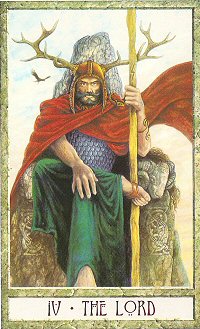 Religious Beliefs and Practices Religious Beliefs and Practices- Because of their great reverence for the art of memory, the pre-Christian Celts themselves left no writings. Other than a few inscriptions, the principal sources of modern information about them are contemporary Greek and Latin writers, notably Poseidonius, Lucan, and Julius Caesar. Insight can also be gleaned from the sagas and myths, particularly of Ireland and Wales, that were recorded by native Christian monks centuries later.
 - Celtic myth is for the most part a disorganized collection of remnants, difficult to sort out. Roman writers such as Caesar made a great effort to syncretize the Gallic gods with their own. While a common Indo-European heritage did manifest itself in certain parallels between the two cultures, their contrasts were far more striking. Celtic “theology” and “eschatology” were pervaded by a spirit of animism and a dreamlike consciousness that bore little resemblance to the rather impersonal Roman state religion.
-
 Gods & Goddesses Gods & Goddesses- Among the male Celtic deities, the god Lugus (or Lug) was prominent. Greek writers identified him with the sun god Apollo, with whom he shared also the mastery of crafts and the patronship of music. Caesar appears to have associated him with Mercury because of his ubiquitousness. Another important god is Cernunnos, the stag-horned, shamanistic Lord of the Animals. Stags play an integral part in the Celtic literature recorded in the early Christian period, apparently embodying the attributes of the shaman. Many other animals, including the raven, the crane, the bull, and the boar, are also accorded divine significance.
-
- Among the female deities, the mare goddess, variously called Epona (Gaul), Macha (Ireland), and Rhiannon (Britain), is a very powerful force, as is the crow-goddess Morrígan. These two figures seem to have ruled most closely the fortunes of king and tribe, the former personifying fertility, the latter, death and rebirth.
-
- Goddesses frequently manifested themselves in triple aspects or in groups of three. Examples include the Gallic Matronae, or three mothers; the Irish Brigits, who rule over poetry, healing, and metalcraft; and the “great queen” Morrígan, whose three aspects represent death-prophecy, battle-panic, and death-in-battle. According to Lucan, the Gauls also had a triple god in whose honour they practiced human sacrifice. His aspects comprise thunder, war, and a mysterious bull, which may represent fertility.
-
 The Honoring / Worship The Honoring / Worship- Celtic worship centred upon the interplay of the “otherworld” or divine element with the land and the waters. Wells, springs, rivers, and hills were believed to be inhabited by guardian spirits, usually female, the names of which survive in many place-names. The land itself was regarded anthropomorphically as feminine. The ocean, ruled by the god Manannán, was also, particularly in British and Irish cosmology, a force of great magic and mystery.
-
- The Celtic otherworld was conceived of as a group of islands far across, or sometimes under, the Western ocean. Its eternally young inhabitants were believed to celebrate continuously with feasts, music, and warrior-contests. Many heroes in the Irish sagas are lured away by women from these islands, and later Christian saints were said to have sailed off in search of them.
-
- Based upon a fluid cosmology in which shape-shifting and magic bonds between humans and other creatures are commonplace, Celtic myths point to a strong belief in the transmigration of souls. Such artifacts as the Gundestrup Caldron (found in Denmark) and the so-called Paris relief depict scenes of shamanistic woodland ritual, and much of Celtic poetry well into the Christian period reflects a preoccupation with transformations and animal consciousness. Trees were a central element in ritual, several types of wood being regarded as oracular. The letters of the alphabet and the names of the months were based on tree-symbols. The Druids took their name from an ancient Indo-European word meaning “Knowing the Oak Tree.”
-
- Irish cult life revolved around seasonal observances. One of the two greatest yearly festivals was Samain (November 1), Summer's-End, or the Feast of the Dead. The other was Beltine (May 1), Bel's-Fire, which honoured the god Belenus and his province of war as well as other “goings forth” to pasture, to the hunt, to wooing, and so on. These periods were in turn divided by the lesser feasts of Imbolc (February 1), the beginning of the spring season sacred to the goddess Brigid, and Lugnasad (August 1), the feast of the marriage of Lugus and the day of the harvest fair. Christianity absorbed and incorporated these great festivals, some of the original spirit of which can be seen in the corresponding modern observances.
|
![]()
![]()
No comments:
Post a Comment